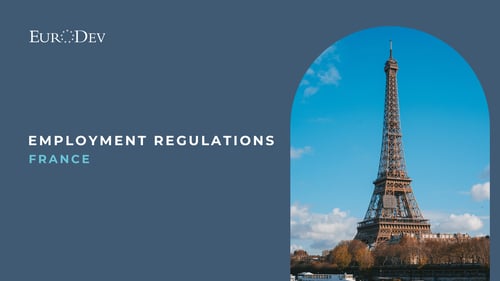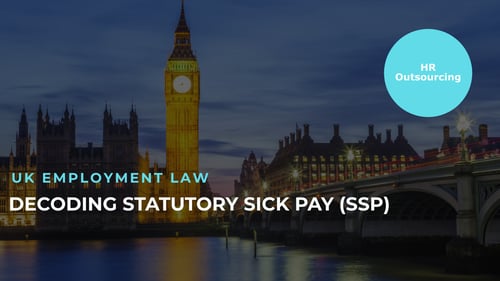Maternity Leave in Europe: Exploring Policies & Benefits by Countries
Working mothers in Europe have the fundamental right to maternity leave, which gives them the time and resources they need to care for their newborns and recover from childbirth. However, there are substantial differences in the length and pay for maternity leave among the various European nations. Some offer a few weeks of unpaid leave, while others offer many months of fully paid time off.
We will examine the advantages and drawbacks of various strategies as we take a deeper look at maternity leave regulations in Europe, highlighting regional variations. We will also look at some of the current maternity leave controversies and speculate on ways to enhance this vital benefit for working mothers.
Latest update: 08. 01. 2024
Maternity Leave Laws in Europe
In Europe, various types of maternity leaves support pregnant and working mothers among employees. However, two directives – the 1992 Maternity Leave Directive and the 2010 Parental Leave Directive – ensure the rights of working mothers for a protected leave from work.
Maternity leave in Europe is considered as leave from work for mothers right before or following birth. It lasts 14 weeks minimum (2 of which are mandatory) and is compensated at least at the national sick pay level.
In most countries, to be eligible for maternity leave in Europe, a working mother must have worked some amount of hours or paid social security contributions.
Paid Maternity Leave Benefits
Maternity leave differs in EU member state countries, along with Norway, Iceland and Switzerland, depending on various factors such as social or economic circumstances that affect its duration and payment.
When it comes to the maternity leave duration, it varies from the minimum mandatory recommendation of 14 weeks in Germany and Switzerland to 20 weeks in Poland and Luxembourg, along with the generous 58 weeks in Bulgaria.
During paid maternity leave in Europe, most countries provide allowances that replace over 50% of an employee's previous salary; some of them are offering full or close to full payments, while some European countries cover flat-rate payments, Ireland, for example.

Maternity Leave in Europe vs the US
There are some differences in the policies and benefits comparing maternity leave in Europe vs the US. While it’s often paid and lasts longer in Europe, maternity leave in the US is considered a leave from work for 12 unpaid but job-protected days for the birth and care of a newborn child or adoption.
Maternity leave in the US is granted by the Family and Medical Leave Act (FMLA); however, not all pregnant employees are eligible. Besides pregnancy, employees must meet some other requirements for maternity leave in the US regarding the number of working days or hours over the past 12 months.
Here is an overview of each country's policies and perks for maternity leave in Europe for further comparison and information.

Maternity Leave in Austria
In Austria, expectant mothers are entitled to maternity protection from 8 weeks before the baby's due date until 8 weeks after the birth. A pregnant woman must take 16 weeks off of work in accordance with Austrian regulations governing maternity protection. With a doctor's clearance, the 16-week maternity leave, also known as the Schutzfrist, may be extended.
Maternity allowance is based on the expecting mother's last three net salary payments and is provided monthly in arrears. While low-income self-insured people receive a fixed amount of 10.35 euros daily, self-employed contractors receive maternity benefits according to their income. In Austria, if you are expecting a child, your job contract may provide that your employer is not required to pay you while you are in Schutzfrist. Your insurance provider will, however, reimburse you weekly for maternity leave.
Beginning the day after the kid is born and continuing through the end of the maternity leave period, fathers in Austria are entitled to a month of paid leave. The father must have worked for at least 182 days to be qualified for paternity leave and must have plans to resume employment.
Maternity Leave in Belgium
The average length of maternity leave in Belgium was 15 weeks. The mother was entitled to an additional four weeks of maternity leave in the event of multiple births. This leave has now been raised to 20 days for births occurring on or after January 1, 2023. Employees, as well as self-employed individuals and government employees, are covered by the extension.
The prenatal leave and the postnatal leave are the two halves of maternity leave in Belgium. In regard to the first one, the mother has to take at least 1 week before the predicted birth date, up to a maximum of 6 weeks. The latter requires a necessary 9-week period beginning with the child's birth.
However, the father may divide the 15 days into 30 half-days if he chooses, or he may take the full amount. These days must be taken within the first four months following the child's birth.

Maternity Leave in Bulgaria
In Bulgaria, the employee is entitled to 410 days of paid maternity leave, starting 45 days before the delivery date of the child. During this period, the employee receives a monthly pay amounting to 90% of her normal salary, paid by the Bulgarian National Health Insurance Fund.
Additionally, the employee is entitled to monthly compensation from social security in the amount of the minimum monthly income for the time between the 410-day grace period and the child's becoming two years old.
Fathers are entitled to 15 days of compulsory paternity leave, paid at 90% of the normal salary rate. Fathers are entitled to this right as long as they have completed at least one year of work.
When the child has reached the age of six months, the remainder of the maternity leave in Bulgaria can be shared between the mother and the father with the mother's explicit consent.

Maternity Leave in Croatia
To be eligible for maternity and parental benefits, individuals must have compulsory health insurance through the Croatian Health Insurance Fund (HZZO) and fulfill other specified conditions. The benefits extend to various caregivers, including the mother and father of the child, adoptive parents, guardians, foster parents, or any person entrusted with the guardianship and upbringing of a minor child by the competent authority.
Employed or self-employed pregnant women, referred to as mothers, can commence maternity leave from the 28th day, or at the earliest 45th day in case of pregnancy complications, until the 70th day after childbirth. This mandatory portion of maternity leave may also be utilized by the father under specific circumstances, such as the mother's death. An additional maternity leave is available for up to six months, during which the mother can choose to return to work and transfer the remaining leave to the father. Financial support for employed or self-employed parents during maternity leave is 100% of the salary compensation base, with a reduced rate of 70% if the insurance period requirement is not met.

Maternity Leave in the Czech Republic
A woman has a right to 28 weeks of maternity leave in the Czech Republic, and 37 weeks in the event of multiple deliveries. At least eight weeks before the anticipated due date, but no later than six weeks, the leave may start. In the Czech Republic, maternity leave and maternity allowance begin together. The Social Security Administration calculates it at 70% of the typical earnings and pays it.
Beginning on February 1, 2018, fathers may be granted paternity leave under their sickness insurance. Paternity leave for fathers is entitled to one week of compensation at the rate of seventy percent of the employee's usual income. If the mother of the child has given written approval for the father to look after the child during that time, paternity leave may start six weeks after the child is born.

Maternity Leave in Denmark
All expectant mothers are entitled to 4 weeks of leave prior to delivery and 10 weeks of maternity leave following delivery. In connection with the birth, fathers and co-mothers are entitled to two weeks of paternity leave.
Each parent is entitled to 32 weeks of parental leave after the first 10 weeks of maternity leave in Denmark. Parental leave can be started by a father or co-mother before the first 14 weeks following the child's birth. Working parents, however, have the option of extending their leave from 32 to 46 weeks. The only options for extending the leave are either 8 or 14 weeks.
In Denmark, children born on or after August 2, 2022, are covered by a modification to the Maternity Leave Act. Each parent will be eligible for 24 weeks of maternity leave benefits if their child is born on or after August 2, 2022. Single parents and parents who are not cohabiting are subject to different rules.
Employees receive 50% of their wages for this time. Employees who are covered by the agreement may be entitled to full pay.

Maternity Leave in Finland
Maternity leave lasts 105 calendar days in Finland. It typically begins 30 working days before the anticipated child's delivery and continues through the baby's birth. More than 30 days but no more than 50 days before the anticipated birth is when maternity leave can be taken.
Fathers, on the other hand, are entitled to 54 days of paid paternity leave. While the mother is on maternity leave, they may take up to 18 days of paternity leave, and they may take the remaining days once the mother has returned to work. Before the child turns two, the days that are left must be used.
On August 1, 2022, a new Act that reforms parental benefits went into effect. If a child is due on or after September 4, 2022, an employee will be eligible for parental allowances under the new Act. In this instance, the reform allocated an equal number of 160 parental allowance days to each parent. Parents may choose to agree to transfer up to 63 days of their parental leave to the other parent or another caregiver.

Maternity Leave in France
In France, maternity leave must last at least 8 weeks. Congé maternité, which is available to women for up to 16 weeks, typically lasts for 10 weeks after delivery and 6 weeks before. If a woman is carrying her third child, this period can be extended to 26 weeks. The gestation duration is 34 weeks for twin pregnancies and 46 weeks for triplet pregnancies. Additionally, a 10-week adoption leave is offered.
In France, paternity leave typically lasts 11 days straight and can last up to 18 days in cases of multiple deliveries.

Maternity Leave in Germany
An employee is legally entitled to 14 weeks of maternity leave (at least six weeks before and eight weeks after childbirth) if becomes pregnant while working in Germany. In the event of premature birth, multiple births, or if a child is determined to have a disability, an employee is entitled to eighteen weeks of leave.
Fathers will receive two weeks of paid leave following the birth of their kid starting in 2024. It will be protected by the Maternity Protection Act and be a paid leave.

Maternity Leave in Greece
Women have a right to 17 weeks of paid maternity leave in Greece. In addition, maternity leave might be split into two phases. The first one covered the initial eight weeks leading up to the anticipated childbirth. The latter includes the nine weeks following delivery. An employee has up to six months after the end of the basic leave to decide whether to extend her maternity leave in Greece.
This is possible in situations including numerous births, early birth, cesarean section, or handicap. An employee may be able to continue working up until the moment of delivery but must let an employer know that the required leave will not be waived. Therefore, an employee will still need to take anywhere between 14 and 17 weeks off.
The mother may also request to work one hour less per day in the subsequent 12 months and one hour less per day in the subsequent 6 months after the first year following the pregnancy, subject to an agreement between the employer and the employee. Fathers have a right to 14 days of paid leave, which can be taken either entirely after the birth of the child or in two halves before.

Maternity Leave in Hungary
Maternity leave for mothers in Hungary is entitled to 168 days, or 24 weeks, of which 4 may start before the projected due date. Mothers are qualified for an infant care stipend for the first 168 days after giving birth. The baby care stipend is equal to 70% of the daily average wage for the time period specified by the Act.
To effectively assist in the care of the baby, male employees are entitled to 5 working days of paternity leave, which must be used within the first 8 weeks of the child's birth. If the father has taken a childcare course, this leave may be extended once for a maximum of 15 working days. Fathers are entitled to two weeks of leave beginning on January 1, 2023 (retrospectively for any children born as of August 2, 2022).
Additionally, any parent may take an educational leave of absence up until the child is two (or three if the child has a disability), as long as the other parent uses at least one month of the leave.

Maternity Leave in Ireland
In Ireland, expectant mothers can take up to 42 weeks of maternity leave. They are entitled to 26 weeks of paid maternity leave and 16 weeks of additional unpaid maternity leave, which begins immediately after the end of their maternity leave.
Given that companies are not required to pay, eligibility for paid leave relies on whether the employee has made sufficient social insurance contributions. The usual weekly fee is 245 euros.
In Ireland, paternity leave is granted at any point within 26 weeks following the birth or adoption. Fathers are entitled to two weeks of leave beginning on January 1, 2023 (retrospectively for all babies delivered as of August 2, 2022).

Maternity Leave in Italy
In Italy, the mandated maternity leave (congedo di maternità) lasts for five months or twenty weeks. Employees have two alternatives to choose from:
- Take the medication 2 months before the anticipated due date and 3 months after the baby is born.
- Allow 4 months after the planned delivery date and 1 month before. Mothers must present a medical document demonstrating that, even if the leave were granted just one month in advance, the baby's welfare would not be jeopardized.
In terms of compensation, a woman in Italy is entitled to receive an allowance for full maternity leave that is equal to 80% of her earnings. If covered by a collective bargaining agreement, the employee may be entitled to a more advantageous allowance of up to 100%. Additionally, it is customary for employers to cover the final 20%.
Paternity leave (congedo di paternità): 10 days of full paid leave, which can be taken separately and can be claimed within five months of the child's birth.
![]()
Maternity Leave in Luxembourg
One of the nations that provide great circumstances for welcoming a child is Luxembourg. In Luxembourg, maternity leave lasts for 20 weeks and can begin as early as 8 weeks before the due date. The lady must have been insured by the mandatory health insurance for at least six months in the last twelve months prior to the maternity leave in order to be eligible to receive benefits from it. During maternity leave in Luxembourg, the employee is compensated by the National Health Fund (CNS).
The employment contract lays forth the terms of paternity leave. It often lasts up to 10 days and doesn't require repeated doses. At least two months before the anticipated date of absence, the father must notify his employer. Otherwise, the number of days of leave could be lowered to two.

Maternity Leave in Norway
Before the child turns three, parents are entitled to a total of 49 weeks of paid leave, or up to 59 weeks with 80% coverage. Maternity leave is included in this leave. To receive the 49 weeks, the father must have sole custody of the child. The three weeks leading up to delivery are set aside for the mother; they do not count toward the maternal quota. Adoptions are exempt from these 3 weeks, hence in this instance, the overall duration is either 46 or 56 weeks.
In Norway, employers are not required to pay employees during maternity leave unless the employment contract specifies otherwise; National Security is responsible for covering parental benefits. Parental benefits are not paid by National Security for salaries that are higher than six times the Grunnpensjon, or "G" amount. In 2020, the cap was around NOK 608.000. Employment agreements typically provide that if an employee's salary exceeds this threshold, the employer must pay parental allowances to the employee.

Maternity Leave in Poland
In Poland, mothers are entitled to approximately as much as 52 weeks of leave.
- For the birth of each child, there is a minimum of 20 weeks of maternity
leave, with at least 14 weeks allocated to the mother after giving birth. The
remaining weeks can be taken by the father. - For the birth of a second child, the maternity leave in Poland is extended to
31 weeks. - The birth of a third child grants a maternity leave of 33 weeks.
- If it's the fourth child, the maternity leave is extended to 35 weeks.
- For the birth of a fifth child or subsequent children, the maternity leave is set
at 37 weeks.
The option exists to take 6 weeks of leave prior to the due date of the baby, with the remaining time being used after the birth, in addition to the standard maternity leave.
The type of birth determines the length of the parental leave that remains: Parental leave is extended to 34 weeks in the case of multiple births from the standard 32 weeks for a single birth. A 2 week paternity leave period is accessible to fathers, and it can be used in conjunction with maternal leave. Only fathers who are employed are eligible to take paternity leave up until the child turns two.
Based on the average monthly pay earned during the previous 12 months, the amount of benefits related to births is determined. In Poland, both maternity and parental leave are paid at 100% of the average hourly salary. For the first six weeks of parental leave, the parental allowance is 100% of the average wage, and for the remaining six weeks, it is 60% of the average wage.

Maternity Leave in Portugal
In Portugal, there is no maternity or paternity leave, only parental leave. You can choose to take 120 or 150 days off; the first 120 days are paid at 100%, while the last 150 days are paid at 80%.
It is possible for both parents to take the 120–160 day term at the same time. Only 120 days are allowed if the child is stillborn. If both parents take the leave time, an additional 30 days are available. With the exception of the mother's initial parental leave, the father may participate in any aspect.

Maternity Leave in Romania
A pregnant employee in Romania is entitled to 126 days of paid maternity leave, funded by the National Social Security Fund, paid at 85% of their average wage for the prior six months. Prenatal leave, which a woman must take for at least 63 days prior to her projected due date, and postnatal leave, which the employee must take for the final 63 days following the birth of the child, make up the two halves of maternity leave. Following the birth of the kid, the first 42 days of leave are required. If the woman does not feel that she needs them, the remaining 84 days can be taken earlier, before the birth, or later, after the birth.
Employees are entitled to 10 working days for any paternity leave request made on or after August 29, 2022, and an additional five working days may be added. A father/partner is entitled to 5 to 10 days of paid leave; if the employee takes an infant care course, the leave period increases to 15 days. The paternity leave is available at any moment after the baby is born for a specified amount of time.

Maternity Leave in Slovenia
Maternity leave (materinski dopust) lasts up to 105 calendar days in Slovenia and begins 28 days before the baby is born. The mother is required to take advantage of her 15 days of paid maternity leave. As an exception, the father or guardian is allowed to leave if the mother is absent (dead, abandoned, or unable) or unable to care for the child. A further 30 calendar days are granted for paternity leave in Slovenia (oetovski dopust), with an additional 10 days for twins and 20 days for triplets.
When maternity leave expires, parental leave (straevski dopust), which is meant to continue caring for the child, begins. A total of 130 days are allotted to each parent for childcare leave; the mother may move 100 of those days to the father so that he may utilize 230 of them; the father may transfer all of those days so that the mother may use 260.
Maternity, paternity, and parental leave in Slovenia are all covered 100% of the average base.

Maternity Leave in Spain
Mothers are entitled to 16 weeks of maternity leave in Spain. The leave can start up to four weeks before the anticipated due date, and it must last for at least six weeks straight after the baby is born. From the second birth, adoption, or multiple births, this time period may be extended by 2 weeks (one week for each parent) for each kid or up to 18 weeks where the child has a disability.
In Spain, instead of receiving pay while on maternity leave, the employee receives a maternity benefit. Social Security calculates and pays the maternity benefit based on the prior month's payment. The monthly maximum for the maternity benefit is 4,070 euros. The employer may choose to cover the difference if the employee's income is typically higher than this sum, but doing so is optional.
Fathers have the right to 16 weeks of paid paternity leave in Spain. The first six weeks must be taken as soon as the baby is born. In the event of multiple deliveries, leave may be increased by two weeks. The state pays the whole 16 weeks' worth of wages.
Maternity Leave in Sweden
One of the world's most generous parental leave policies is found in Sweden. When a child is born or adopted in Sweden, both parents are entitled to 240 days. If more than one child is born into the family, an additional 180 days are permitted.
It is crucial to note that in Sweden, both parents may take advantage of parental leave at the same time during the first three months to give their newborn their undivided attention. The father is entitled to an additional 10 days at home during that time.
Parental benefit is paid for 390 days at the sickness benefit rate, or between SEK 250 to 1,027 per day, and for the final 90 days at SEK 180 per day. You will receive SEK 250 per day if you have worked for fewer than 240 days, have gone without pay, or make less than SEK 117,590 annually. On a basic level, this is referred to as parental benefit.

Maternity Leave in Switzerland
In Switzerland, employees who are pregnant and who have paid Social Insurance contributions for at least nine months prior to the due date are eligible for 14 weeks of maternity leave. The maternity allowance is supplied by federal insurance and is paid daily for 14 weeks at 80% of the usual income. A total of 16 weeks of maternity leave are available to employees in the canton of Geneva, including two additional weeks.
The regular 14-week maternity leave in Switzerland can be extended by a mother for an additional two weeks. However, they are not compensated for those two more weeks. The employer is free to accept or reject a mother's request for a lengthier duration of unpaid leave after these two weeks.
The duration of paternity leave is two weeks or 14 days. A single term of paternity leave or specific days may be taken. However, the leave must be taken within six months of the child's birth. Benefits for paternity leave are capped at CHF 195 (USD 211,53) per day and are equal to 80% of the employee's prior-to-baby's-birth average salary. Fathers do not yet have a legal entitlement to extend their paternity leave. If they want to do it, they must make arrangements with their employer.

Maternity Leave in the Netherlands
In the Netherlands, expecting mothers are allowed a total of 16 weeks off work. A minimum of 10 weeks of maternity leave must follow childbirth in addition to six weeks of pregnancy leave before the due date. For example, if the baby is born before the pregnancy leave, the 16-week period begins on the day of the baby's birth. Your employee has the right to at least 20 weeks of leave if there are multiple births.
She is also entitled to maternity pay. Employers are eligible to request a 100% maternity benefit for their staff members.
In the Netherlands, an employee has the right to one week of paternity leave if his or her partner delivers birth. The first four weeks following the birth are open for taking this paid vacation at any time. The business is required to pay the employee's entire wage during this 1-week absence. In the first six months following the birth, partners have the option to extend the partner’s leave to five weeks. Employees who prolong their leave may be eligible to receive benefits from the Employment Insurance Agency (UWV) equal to up to 70% of their pay.

Maternity Leave in the UK
In the UK, mothers are entitled to maternity pay and leave under the law. The overall length of statutory maternity leave in the UK is 52 weeks – the first 26 weeks of standard maternity leave, followed by another 26 weeks of leave. An employee is not required to work 52 weeks but is required to take 2 minimum weeks of leave (or 4 weeks if working in a factory) after the birth of her child.
For up to 39 weeks, statutory maternity pay (SMP) is paid:- For the first six weeks, an employee is entitled to 90% of her average weekly
wages (before taxes); - For the upcoming 33 weeks, £172.48 or 90% of her average weekly income,
whichever is lower.
More information
We are here to act as your strategic partner.
If you want to know more about HR Outsourcing in Europe, please do not hesitate to contact Monique Ramondt-Sanders – VP of Human Resource Outsourcing.
Category
Related articles
-

Essential Guide to French Employment Regulations
22 March 2024comprehensive guide on French employment regulations for companies expanding to France, covering...
Read more -

Germany's Pension Landscape: Navigating Benefits and Taxation for Informed Decision-Making
5 February 2024Dive into the intricacies of the German pension system: benefits, calculations, retirement options,...
Read more -

Decoding Statutory Sick Pay (SSP) in the UK
29 January 2024Navigate the complexities of Statutory Sick Pay in the UK with our guide on rights, regulations,...
Read more



